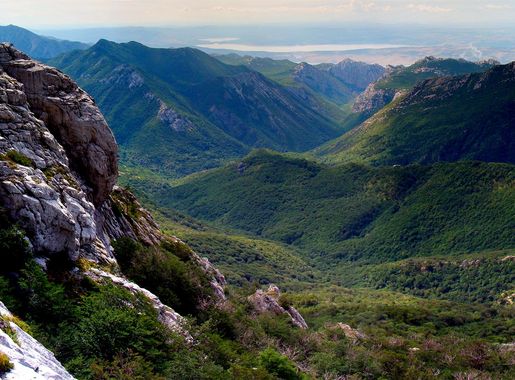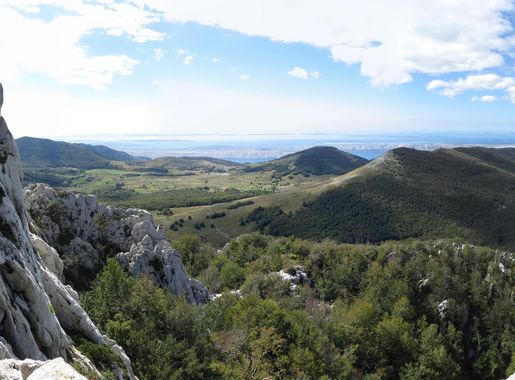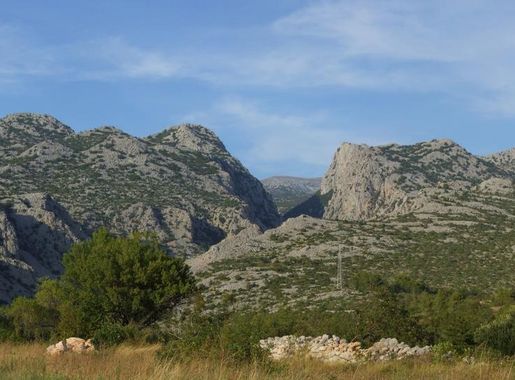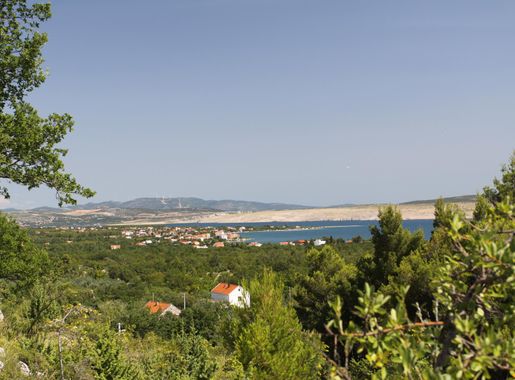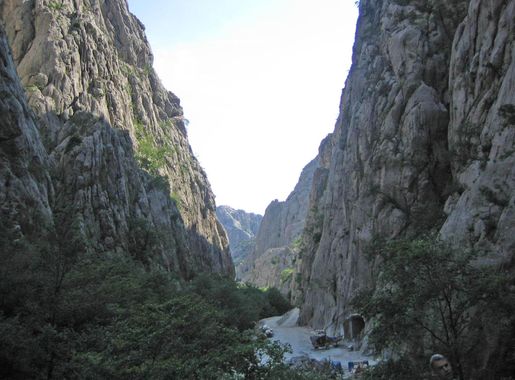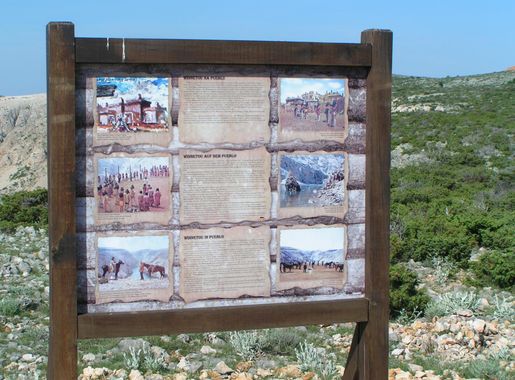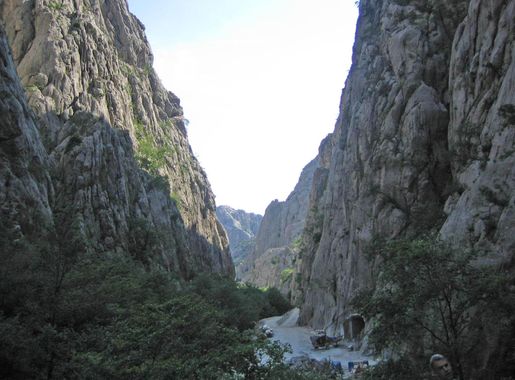
Enchanting Paklenica Riviera: Croatia's Hidden Gem
Discover Paklenica Riviera: where the Adriatic Sea meets the Velebit Mountains, offering a unique blend of pristine beaches, dramatic cliffs, and lush forests.
Nestled along the Adriatic Sea, Paklenica Riviera is a captivating blend of natural beauty and cultural heritage. This Croatian treasure offers visitors a unique combination of pristine beaches, dramatic cliffs, and lush forests. The region is part of the Velebit Mountain range, making it a paradise for nature lovers and adventure seekers alike. Paklenica National Park, the crown jewel of the Riviera, boasts stunning gorges and an extensive network of hiking trails. Visitors can explore the famous Velika and Mala Paklenica canyons, which are home to diverse flora and fauna. Climbing enthusiasts will find the park's rugged cliffs irresistible, with routes suitable for both beginners and experts. Beyond the natural attractions, the Riviera's coastal towns exude charm and history. The town of Starigrad, with its ancient ruins and welcoming atmosphere, serves as a perfect base for exploring the region. Local cuisine delights the palate, featuring fresh seafood and traditional Croatian dishes. Whether you're seeking relaxation or adventure, Paklenica Riviera promises an unforgettable experience.
Local tips in Paklenica Riviera
- Visit Paklenica National Park early in the morning to avoid crowds and enjoy cooler temperatures.
- Bring sturdy hiking boots if you plan to explore the park's trails and canyons.
- Try the local seafood at one of Starigrad's coastal restaurants for an authentic taste of the region.
- Check the weather forecast before hiking or climbing, as conditions can change rapidly in the mountains.
- Carry plenty of water and sunscreen during your outdoor adventures.
- Consider renting a car to explore the Riviera and its surrounding areas at your own pace.
Enchanting Paklenica Riviera: Croatia's Hidden Gem
Nestled along the Adriatic Sea, Paklenica Riviera is a captivating blend of natural beauty and cultural heritage. This Croatian treasure offers visitors a unique combination of pristine beaches, dramatic cliffs, and lush forests. The region is part of the Velebit Mountain range, making it a paradise for nature lovers and adventure seekers alike. Paklenica National Park, the crown jewel of the Riviera, boasts stunning gorges and an extensive network of hiking trails. Visitors can explore the famous Velika and Mala Paklenica canyons, which are home to diverse flora and fauna. Climbing enthusiasts will find the park's rugged cliffs irresistible, with routes suitable for both beginners and experts. Beyond the natural attractions, the Riviera's coastal towns exude charm and history. The town of Starigrad, with its ancient ruins and welcoming atmosphere, serves as a perfect base for exploring the region. Local cuisine delights the palate, featuring fresh seafood and traditional Croatian dishes. Whether you're seeking relaxation or adventure, Paklenica Riviera promises an unforgettable experience.
When is the best time to go to Paklenica Riviera?
Iconic landmarks you can’t miss
Paklenica National Park
Explore the breathtaking landscapes and thrilling adventures of Paklenica National Park, Croatia's natural gem for outdoor enthusiasts.

Manita peć
Explore the stunning landscapes and unique biodiversity of Manita peć National Reserve in Croatia's Paklenica region, a paradise for nature lovers and adventurers.
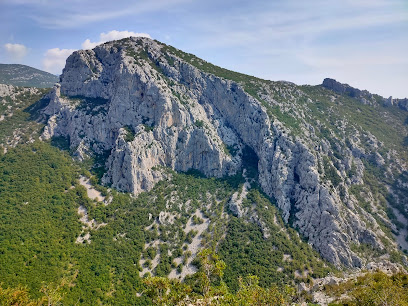
Paklenica Starigrad
Discover the breathtaking landscapes and thrilling adventures at Paklenica National Park in Croatia, a paradise for hikers and nature lovers.
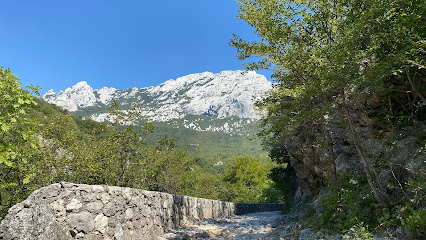
Mirila - Mali Vitrenik (410 m/nv) - Starigrad Paklenica
Explore the historic and serene hiking trails of Mirila - Mali Vitrenik in Starigrad Paklenica, where nature meets cultural heritage.
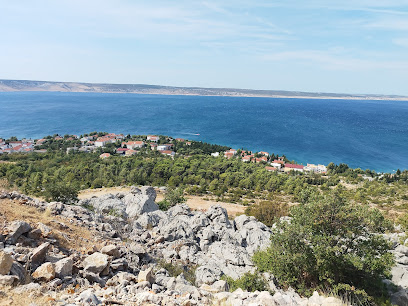
Večka kula
Discover the historical splendor of Večka Kula in Starigrad, Croatia, where ancient tales meet breathtaking coastal views.
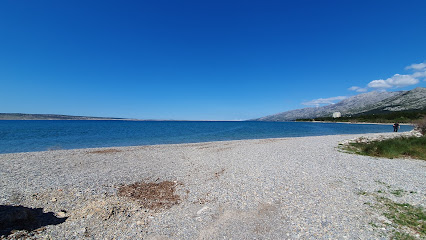
Starigrad-Paklenica
Experience the breathtaking beauty of Starigrad-Paklenica, where the Adriatic Sea meets majestic mountains, perfect for adventure and relaxation.
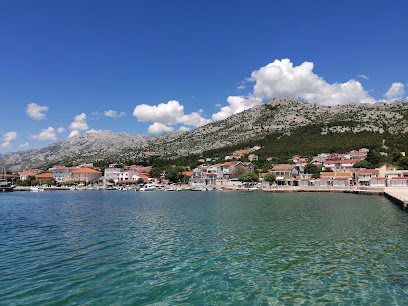
Paklarić
Uncover the cultural tapestry of Starigrad at the Paklarić Museum, a treasure trove of history and art waiting to be explored.

Unmissable attractions to see
Paklenica National Park
Experience the breathtaking landscapes and diverse wildlife of Paklenica National Park, a must-visit destination for outdoor enthusiasts in Croatia.
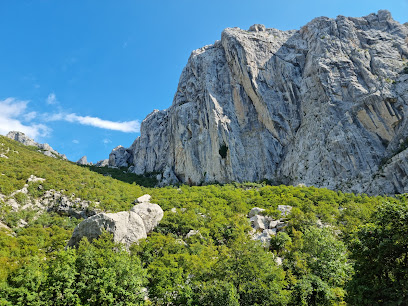
Vecka Kula Beach
Discover Vecka Kula Beach in Starigrad, Croatia, where crystal-clear waters and soft sands create the perfect coastal retreat.
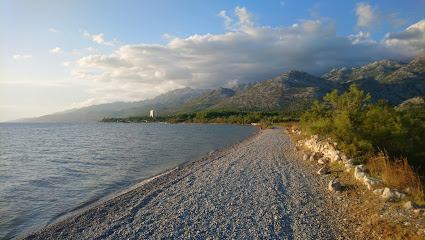
Manita peć
Explore the stunning Manita Peć cave in Paklenica National Park, a natural wonder offering breathtaking views and rich biodiversity for adventurous travelers.
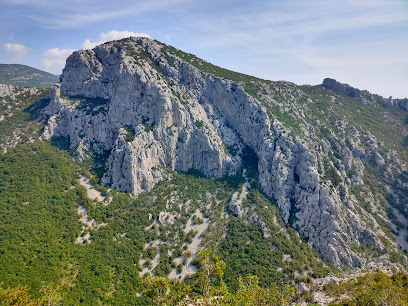
Winnetou Museum
Explore the Winnetou Museum in Starigrad, Croatia, and delve into the legendary tales of Karl May's iconic character through engaging exhibits and rich history.
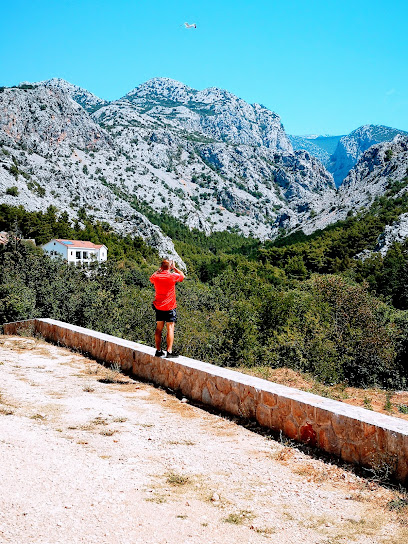
Starigrad-Paklenica
Explore the stunning natural beauty and rich cultural heritage of Starigrad-Paklenica, the gateway to Paklenica National Park and the Adriatic Sea.
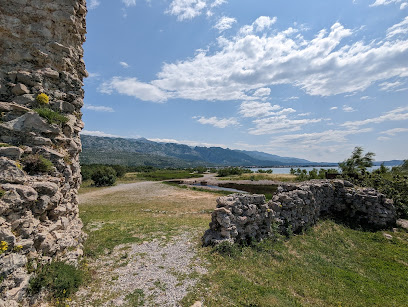
Paklarić
Explore the fascinating Paklarić Museum in Starigrad, where local art and culture come to life in a serene setting, perfect for all art enthusiasts.

Essential places to dine
Bistro Ribič
Savor authentic Croatian cuisine at Bistro Ribič in Otočac - where local flavors meet warm hospitality.
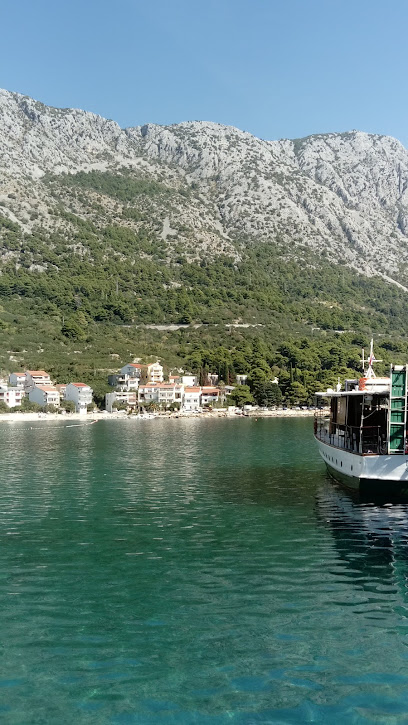
Dinko Buffet Paklenica
Experience authentic Croatian cuisine at Dinko Buffet Paklenica in Starigrad – where flavor meets affordability amidst stunning coastal scenery.
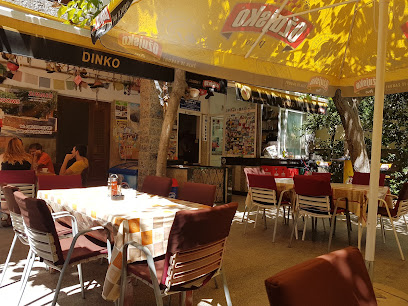
Dalmacija Restaurant & Apartments
Experience authentic Croatian cuisine and cozy accommodations at Dalmacija Restaurant & Apartments in scenic Starigrad.
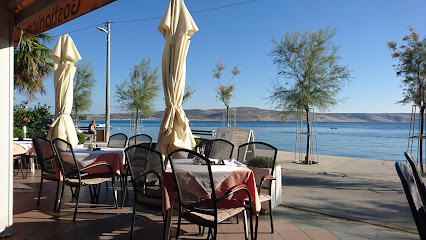
Taverna Konoba Marasovic
Discover the authentic flavors of Croatia at Taverna Konoba Marasovic in Starigrad - where tradition meets taste.
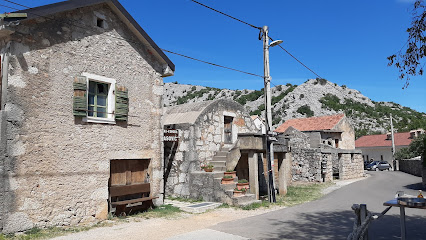
Restaurant Marin
Experience authentic Croatian cuisine at Restaurant Marin in Starigrad, where local flavors meet warm hospitality for an unforgettable dining experience.

Rovanjska
Explore Rovanjska: A serene Croatian coastal escape with stunning beaches and delectable local cuisine.
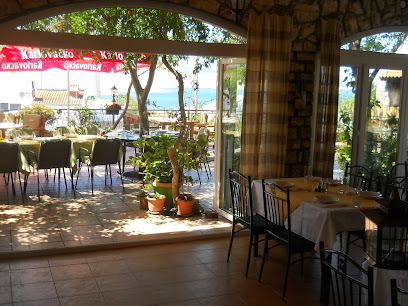
Ante Restaurant Steak House
Delight your taste buds at Ante Restaurant Steak House in Starigrad with exquisite steaks and local flavors in a cozy setting.
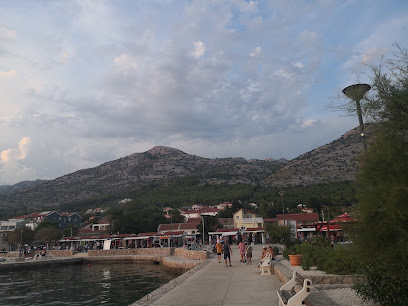
VRILO GACKE
Discover the culinary delights at VRILO GACKE Bistro in Sinac - where local flavors meet inviting ambiance.
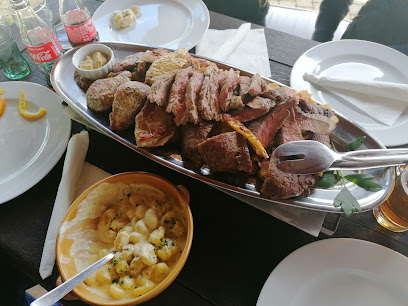
Bartol
Discover the essence of Croatian cuisine at Bartol in Rovanjska – where fresh seafood meets breathtaking Adriatic views.

B&T Restaurant
Discover authentic Croatian flavors at B&T Restaurant in Starigrad – where fresh ingredients meet traditional recipes.
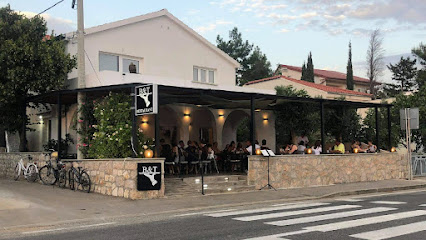
Pension TOTA
Experience authentic Croatian cuisine at Pension TOTA in Starigrad with stunning sea views and a warm atmosphere perfect for any occasion.
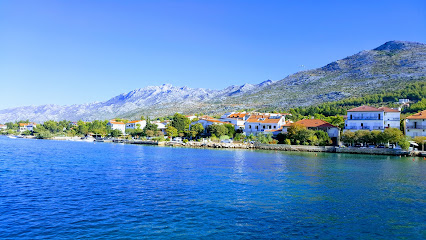
Bistro Antonio
Discover the flavors of Croatia at Bistro Antonio, where traditional dishes meet warm hospitality in the heart of Starigrad.
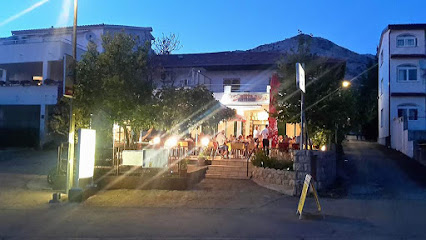
Konoba Pece
Discover authentic Croatian flavors at Konoba Pece in Vinjerac – where delicious cuisine meets stunning coastal views.

Restoran & apartmani “Santa Marija” DOL
Experience authentic Croatian cuisine and cozy accommodations at Restoran & apartmani 'Santa Marija' in beautiful Stari Grad.
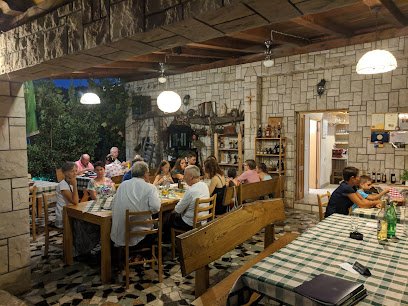
Restaurant Degenija
Experience authentic Mediterranean flavors at Restaurant Degenija in Starigrad - A culinary treasure offering delicious pizzas and local dishes.

Markets, malls and hidden boutiques
City Center one Split
Discover the ultimate shopping and dining experience at City Center One Split, a vibrant hub in the heart of Croatia's coastal gem.
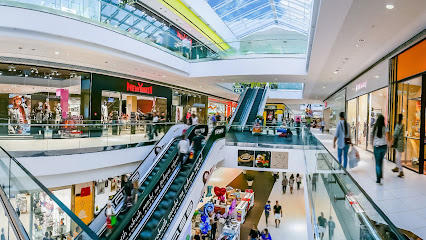
Paklenica National Park
Explore the breathtaking landscapes and rich biodiversity of Paklenica National Park, a must-visit destination for nature lovers and adventure enthusiasts.
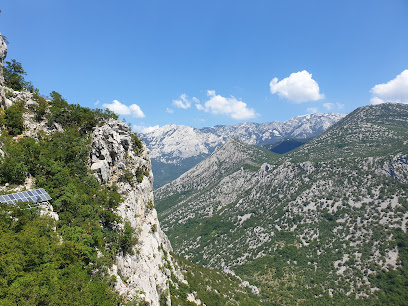
Dinko Buffet Paklenica
Experience the flavors of Croatia at Dinko Buffet Paklenica, where fresh ingredients and local recipes come together in a picturesque setting.
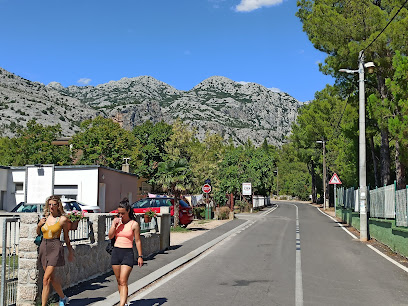
Manita peć
Explore the stunning landscapes and unique geological wonders of Manita Peć National Reserve, a natural paradise in Croatia.
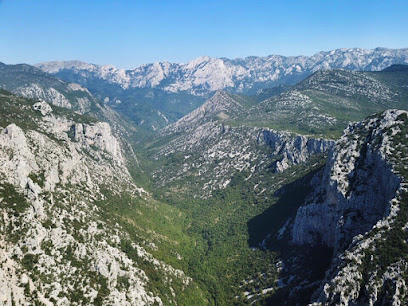
camp “Nacionalni park”
Discover the enchanting Camp Nacionalni Park, a pristine campground near Paklenica National Park, perfect for nature lovers and adventure seekers.
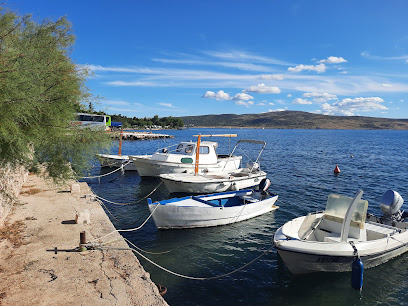
Kredenca Zagreb
Discover the charm of Croatia at Kredenca Zagreb, your go-to gift shop and deli for authentic souvenirs and local delicacies.

Cottage Lugarnica
Escape to Cottage Lugarnica, a serene mountain cabin in Starigrad, Croatia, offering breathtaking views and outdoor adventures in Paklenica National Park.
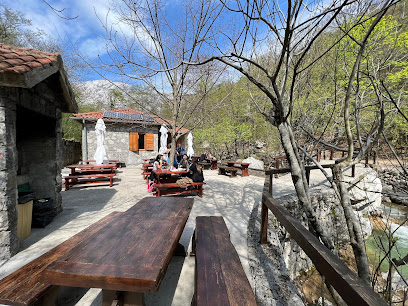
Apartments Prkačin
Experience the serene beauty of Starigrad at Apartments Prkačin, your perfect holiday getaway with modern comforts and close beach access.

BREAK TIME Handmade Jewellery & Souvenirs
Explore exquisite handmade jewelry and unique souvenirs at BREAK TIME in Split, a treasure trove of Croatian craftsmanship.
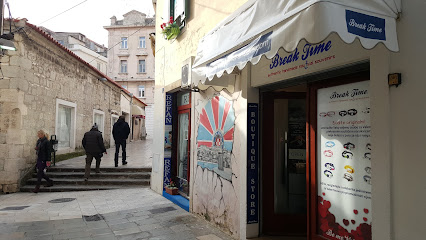
Isola | artisan store Hvar
Discover the essence of Hvar at Isola, a charming artisan store offering unique gifts and souvenirs handcrafted in Croatia.
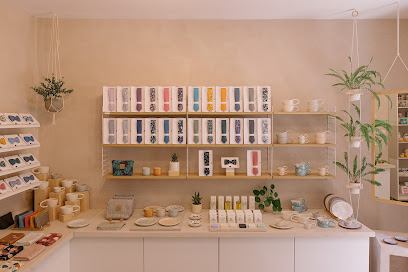
Javna ustanova Nacionalni park Paklenica
Explore the breathtaking landscapes and diverse ecosystems of Paklenica National Park, a true gem in Croatia's natural heritage.
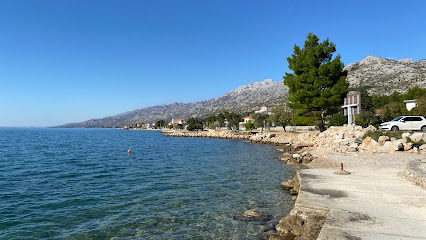
Kredenca Opatija
Explore Kredenca Opatija, a treasure trove of unique souvenirs and gourmet delights that captures the essence of Croatian culture.
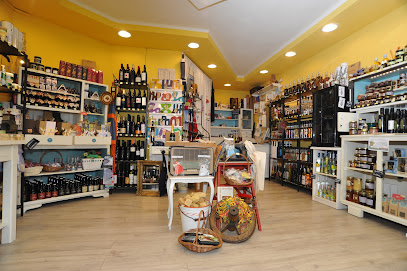
Souvenirs Gric
Discover authentic Croatian souvenirs at Souvenirs Gric, where tradition meets modern craftsmanship in the heart of Zagreb.
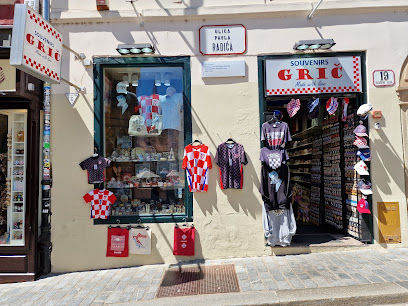
Paklarić
Explore the rich cultural heritage of Starigrad at the Paklarić Museum, where local history and artistry come alive.
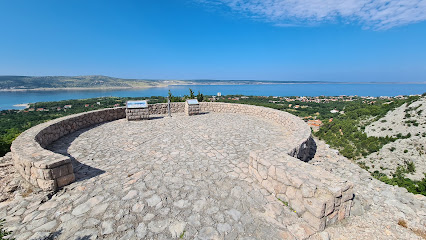
Antique Hvar
Discover unique vintage treasures at Antique Hvar in Stari Grad, where history and craftsmanship come alive through curated antiques.
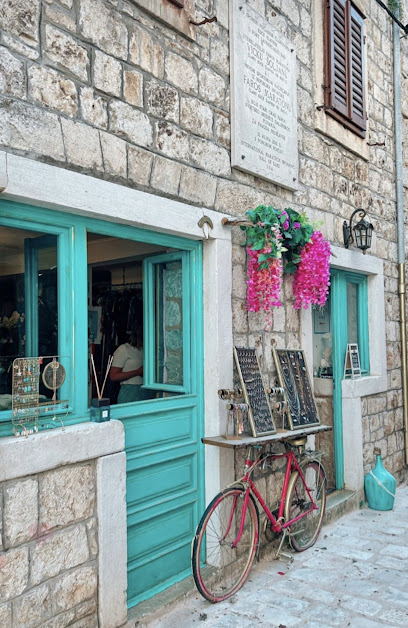
Essential bars & hidden hideouts
Dinko Buffet Paklenica
Experience the flavors of Croatia at Dinko Buffet Paklenica, where fresh seafood meets picturesque views in a charming setting.
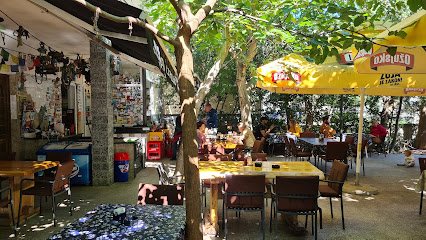
Pizzeria - Restoran - Coctail Bar Kaleta
Discover the vibrant flavors and inviting atmosphere at Pizzeria - Restoran - Coctail Bar Kaleta in Starigrad, a must-visit for food lovers.
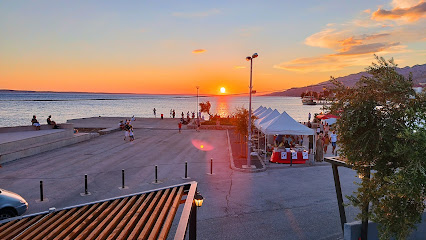
Dalmacija Restaurant & Apartments
Experience exquisite dining and cozy accommodations at Dalmacija Restaurant & Apartments in Starigrad, Croatia, where local flavors meet stunning views.
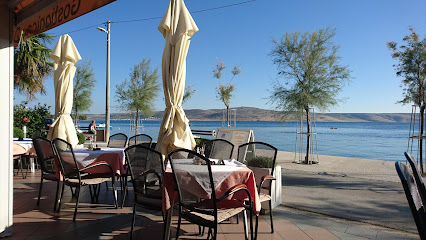
Taverna Konoba Marasovic
Experience the rich flavors of Croatia at Taverna Konoba Marasovic, a must-visit restaurant in Starigrad offering authentic dishes and a warm atmosphere.
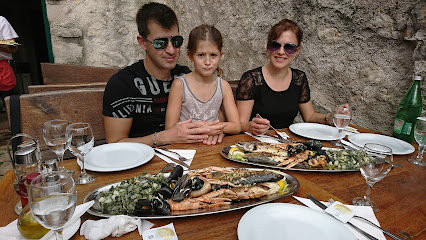
Pension TOTA
Experience the essence of Croatian cuisine at Pension TOTA, a charming restaurant in Starigrad with stunning sea views and a warm atmosphere.
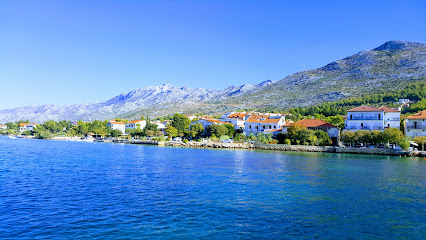
Lampedusa Bar
Experience the vibrant cocktails and lively atmosphere at Lampedusa Bar in Stari Grad, the perfect spot for nightlife enthusiasts.
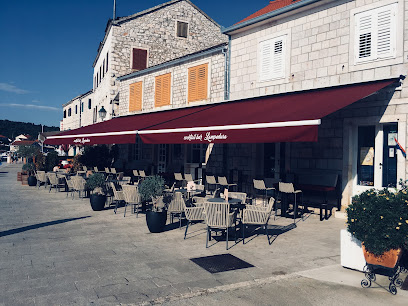
Bikarija Pub
Discover the lively spirit of Bikarija Pub in Starigrad, where local culture meets a vibrant atmosphere for an unforgettable night out.
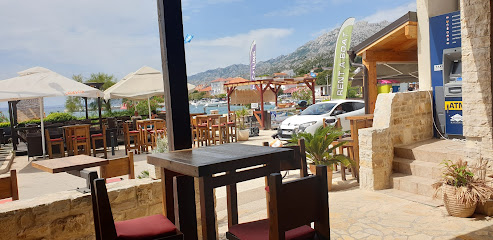
Beach Bar Sige
Experience the vibrant atmosphere of Beach Bar Sige, a perfect seaside retreat in Starigrad, Croatia, for great drinks and stunning views.
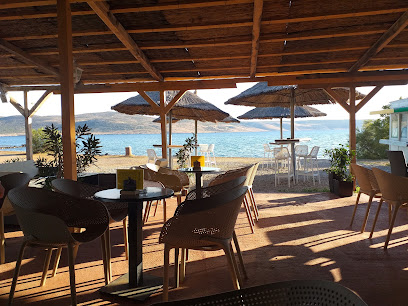
Konoba Batela
Experience authentic Croatian cuisine at Konoba Batela in Starigrad, where every meal is a celebration of local flavors and culture.
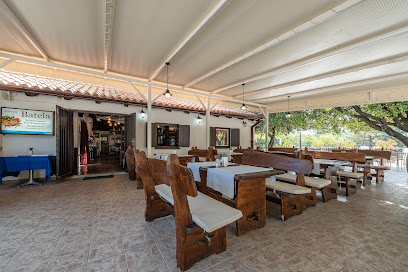
Taraca Bar
Discover the vibrant nightlife at Taraca Bar in Starigrad, where exceptional drinks and stunning views create unforgettable memories.
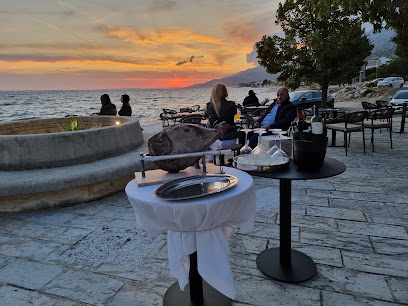
Caffe bar Lavanda
Experience the charm of Starigrad at Caffe Bar Lavanda, where great coffee, delightful drinks, and a welcoming atmosphere await.

The Backyard
Experience the charm of The Backyard in Starigrad-Paklenica, where local flavors meet a relaxed vibe in a picturesque setting.
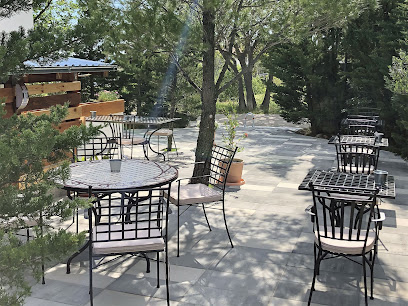
Local Phrases about Paklenica Riviera
-
- HelloBok
[Bohk] - GoodbyeDoviđenja
[Doh-vee-jen-ya] - YesDa
[Dah] - NoNe
[Neh] - Please/You're welcomeMolim
[Moh-leem] - Thank youHvala
[Hvah-lah] - Excuse me/SorryOprostite
[Oh-proh-stee-teh] - How are you?Kako si?
[Kah-koh see] - Fine. And you?Dobro. A ti?
[Doh-broh. Ah tee] - Do you speak English?Govoriš li engleski?
[Goh-voh-reesh lee eng-leh-skee] - I don't understandNe razumijem
[Neh rah-zoo-mee-yem]
- HelloBok
-
- I'd like to see the menu, pleaseMogu li vidjeti jelovnik, molim?
[Moh-goo lee vee-dyeh-tee yeh-lohv-neek, moh-leem] - I don't eat meatNe jedem meso
[Neh yeh-dem meh-soh] - Cheers!Živjeli!
[Zhee-vyeh-lee] - I would like to pay, pleaseŽelim platiti, molim
[Zheh-leem plah-tee-tee, moh-leem]
- I'd like to see the menu, pleaseMogu li vidjeti jelovnik, molim?
-
- Help!Pomoć!
[Poh-mohch] - Go away!Idi dalje!
[Ee-dee dah-l-yeh] - Call the Police!Pozovite policiju!
[Poh-zoh-vee-teh poh-lee-tsee-yoo] - Call a doctor!Pozovite doktora!
[Poh-zoh-vee-teh dohk-toh-rah] - I'm lostIzgubio/la sam se
[Eez-goo-bee-oh/lah sahm seh] - I'm illBolestan/na sam
[Boh-leh-stahn/nah sahm]
- Help!Pomoć!
-
- I'd like to buy...Želim kupiti...
[Zheh-leem koo-pee-tee] - I'm just lookingSamo gledam
[Sah-moh gleh-dahm] - How much is it?Koliko košta?
[Koh-lee-koh koh-shta] - That's too expensiveTo je preskupo
[Toh yeh preh-skoo-poh] - Can you lower the price?Možete li spustiti cijenu?
[Moh-zheh-teh lee spoos-tee-tee tsee-yeh-noo]
- I'd like to buy...Želim kupiti...
-
- What time is it?Koliko je sati?
[Koh-lee-koh yeh sah-tee] - It's one o'clockJedan je sat
[Yeh-dahn yeh saht] - Half past (10)Pola (deset)
[Poh-lah (deh-seht)] - MorningJutro
[Yoo-troh] - AfternoonPopodne
[Poh-poh-dneh] - EveningVečer
[Veh-chehr] - YesterdayJučer
[Yoo-cher] - TodayDanas
[Dah-nahs] - TomorrowSutra
[Soo-trah] - 1Jedan
[Yeh-dahn] - 2Dva
[Dvah] - 3Tri
[Tree] - 4Četiri
[Cheh-tee-ree] - 5Pet
[Peht] - 6Šest
[Shehst] - 7Sedam
[Seh-dahm] - 8Osam
[Oh-sahm] - 9Devet
[Deh-veht] - 10Deset
[Deh-seht]
- What time is it?Koliko je sati?
-
- Where's a/the...?Gdje je...?
[Gdyeh yeh] - What's the address?Koja je adresa?
[Koh-yah yeh ah-dreh-sah] - Can you show me (on the map)?Možete li mi pokazati (na karti)?
[Moh-zheh-teh lee mee poh-kah-zah-tee (nah kahr-tee)] - When's the next (bus)?Kada dolazi sljedeći (autobus)?
[Kah-dah doh-lah-zee sl-yeh-deh-chee (ow-toh-boos)] - A ticket (to ....)Jednu kartu (do ...)
[Yeh-dnoo kar-too (doh)]
- Where's a/the...?Gdje je...?
History of Paklenica Riviera
-
The region of Paklenica Riviera has been inhabited since prehistoric times, with evidence of ancient Illyrian tribes who settled in the area. These early inhabitants left behind various artifacts, including tools and pottery, which offer a glimpse into their daily lives and customs.
-
During the Roman period, the Paklenica Riviera became part of the Roman province of Dalmatia. The Romans left a significant mark on the region, constructing roads, fortifications, and villas. Remnants of these structures can still be found today, showcasing the architectural prowess of the Romans.
-
In the medieval period, Paklenica Riviera came under the influence of various powers, including the Byzantine Empire and the Kingdom of Croatia. By the 15th century, the area fell under Venetian rule, which lasted until the late 18th century. The Venetians fortified the coastline to protect against Ottoman incursions, and their architectural influence is visible in several coastal towns.
-
The Ottoman Empire posed a constant threat to the Paklenica Riviera during the 16th and 17th centuries. To defend against Ottoman raids, local inhabitants built a series of fortifications and watchtowers. These structures, some of which are still standing, played a crucial role in the region's defense strategy.
-
Following the fall of the Venetian Republic, the Paklenica Riviera became part of the Austrian Empire, and later the Austro-Hungarian Empire, in the 19th century. During this period, the region saw significant infrastructure development, including the construction of roads and railways, which facilitated trade and tourism.
-
During World War II, the Paklenica Riviera was occupied by Axis forces. In the aftermath of the war, Yugoslav leader Josip Broz Tito commissioned the construction of a secret bunker in the Paklenica National Park, intended as a refuge in case of an attack. This bunker, known as 'Tito's Bunker,' is now a fascinating historical site open to visitors.
-
Paklenica National Park was established in 1949, recognizing the area's unique natural beauty and geological significance. The park encompasses the dramatic canyons of Velika and Mala Paklenica and is home to diverse flora and fauna. It has since become a popular destination for hikers, climbers, and nature enthusiasts.
-
The Paklenica Riviera is rich in cultural heritage, with traditions passed down through generations. Local customs, traditional music, and folk dances are celebrated during various festivals throughout the year. The region's cuisine, characterized by fresh seafood and Mediterranean flavors, reflects its coastal culture and history.
Paklenica Riviera Essentials
-
Paklenica Riviera is located in the northern part of Dalmatia, Croatia. The nearest major airport is Zadar Airport (ZAD), which is about 40 kilometers away. From Zadar, you can take a bus or rent a car to reach Paklenica Riviera. Buses run regularly from Zadar to the towns along the Riviera. Alternatively, you can also reach Paklenica Riviera by driving from other major cities in Croatia such as Split, which is around 120 kilometers away.
-
Once you arrive in Paklenica Riviera, getting around is quite convenient. Public buses connect the various towns and villages in the area. Taxis are also available, though it's recommended to agree on a fare beforehand. For those who prefer more flexibility, renting a car is a popular option. Biking and walking are excellent ways to explore the natural beauty of the region, especially within Paklenica National Park.
-
The official currency in Croatia is the Croatian Kuna (HRK). Credit and debit cards are widely accepted in hotels, restaurants, and shops along the Paklenica Riviera. However, it is advisable to carry some cash, especially when visiting smaller establishments or remote areas. ATMs are readily available in towns like Starigrad and Seline.
-
Paklenica Riviera is generally a very safe destination for tourists. Violent crime is rare, but petty crime such as pickpocketing can occur, particularly in crowded areas. It is advisable to keep an eye on your belongings and avoid leaving valuables unattended. There are no specific high-crime areas targeting tourists, but exercising standard precautions is always recommended.
-
In case of an emergency, dial 112 for immediate assistance, which is the general emergency number in Croatia. Local police stations and medical facilities are available in the main towns along the Riviera. It is highly recommended to have travel insurance that covers medical emergencies. Pharmacies are available in Starigrad and other larger towns for minor health issues and over-the-counter medications.
-
Fashion: Do dress comfortably and appropriately for outdoor activities, especially if you plan to hike in Paklenica National Park. Avoid overly revealing clothing in more traditional areas. Religion: Do respect local customs and traditions. While Croatia is predominantly Catholic, it is always polite to be respectful in religious sites. Public Transport: Do be considerate of other passengers. Don't eat or drink on public transport. Greetings: Do greet people with a friendly 'Dobar dan' (Good day). A handshake is common when meeting someone for the first time. Eating & Drinking: Do try local dishes like 'peka' and 'brodet'. Don't refuse hospitality as it is considered impolite.
-
For an authentic experience, visit local markets where you can purchase fresh produce and traditional Dalmatian goods. Engage with the locals, as they are often friendly and willing to share insights about the area. Don't miss the opportunity to explore Paklenica National Park, especially the Velika and Mala Paklenica canyons. For a unique experience, consider staying in a traditional stone house or 'konoba' to immerse yourself in the local culture.
Nearby Cities to Paklenica Riviera
-
Things To Do in Zagreb
-
Things To Do in Bihac
-
Things To Do in Jajce
-
Things To Do in Pecs
-
Things To Do in Zenica
-
Things To Do in Rogaška Slatina
-
Things To Do in Ptuj
-
Things To Do in Tuzla
-
Things To Do in Keszthely
-
Things To Do in Zalaegerszeg
-
Things To Do in Celje
-
Things To Do in Maribor
-
Things To Do in Velenje
-
Things To Do in Zadar
-
Things To Do in Sarajevo

